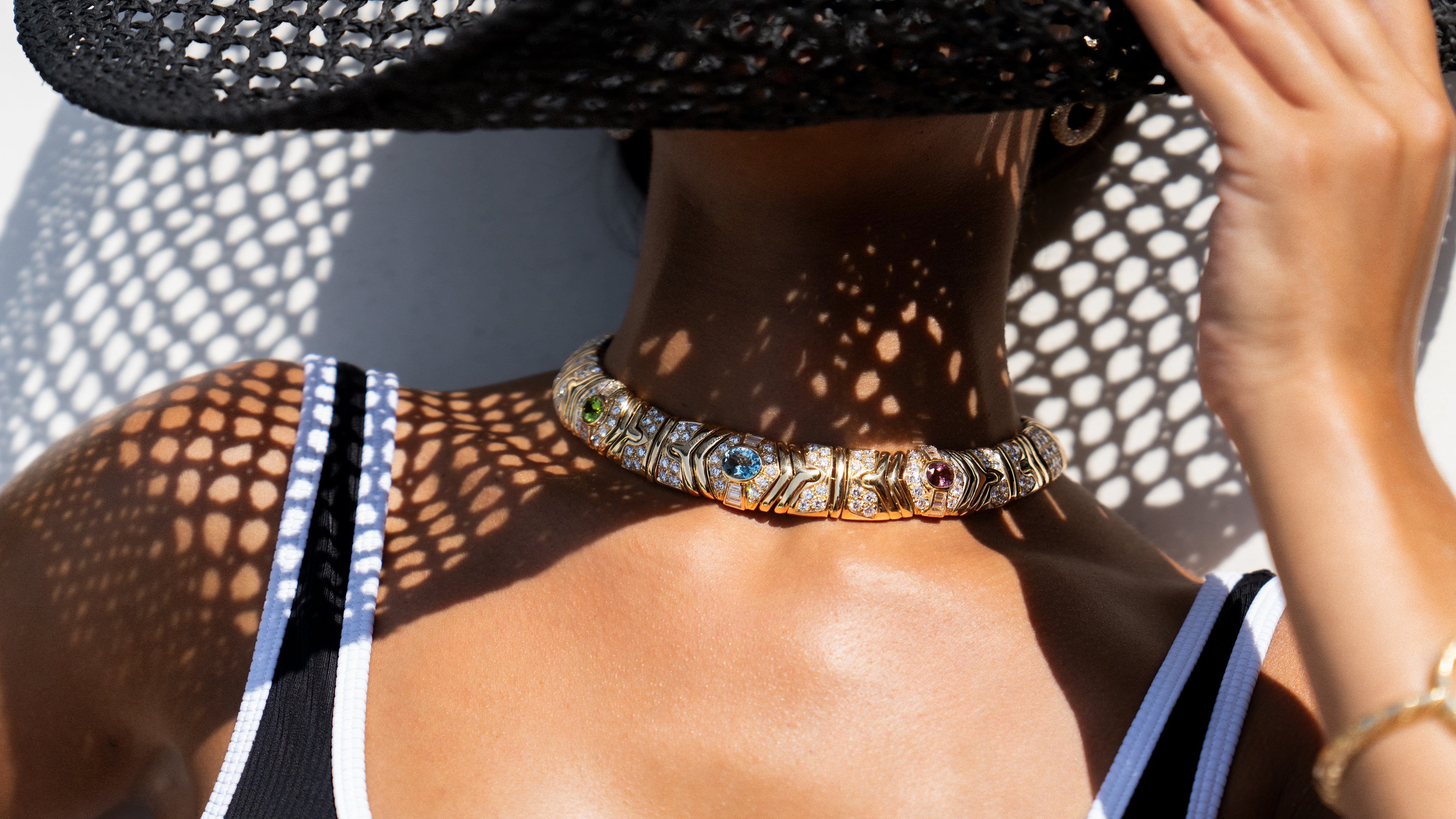Frank Gardner Hale
A luminary in the American Arts and Crafts movement, Frank Gardner Hale was a passionate craftsman who created some of the most breathtaking jewels of his time.
Beginnings
Norwich, Connecticut was home to Frank Gardner Hale, who was born there in 1876. His interests in art and design were apparent, but his path to jewelry creation was not direct. Hale’s education began with his studies at the Norwich Art School and the Boston Museum School.
An Ocean Away
Upon graduation, Hale moved to England, where he studied at the Guild of Handicrafts. There he designed book and music covers for eight years before making his move to pursue the study of jewelry design.
In 1906, Hale joined C.R. Ashbee’s Guild of Handicrafts in Chipping Campden in the Cotswolds, where he learned silversmithing and enameling. After his studies, he moved to London to work with Fred Partridge, an esteemed jeweler, and enameller.
Home Again
Returning to Boston in 1907, Hale opened shop and joined the Society of Arts & Crafts, which made him a master just one year later.
Hale benefited by his studies abroad, although his work was not derivative. He took his training and added his own unique expression, assimilating the methods of excellent craftsmanship while striving for technical perfection, making his jewelry distinctive. Inspired in part by his days creating book and music covers, Hale took many of those themes – leaves, flowers, curves, and scrolls – and fashioned his brooches, pendants, and rings using these elements. He was a master of the play of dark and light, employing enamel to accentuate details and enhance the gemstones.
His earliest pieces featured arrangements of gemstones, balls, and scrolls, creating a symmetrical effect that followed the form of the times. As he developed as a designer, Hale’s creations became more fluid, with groupings of pearls and colored gemstones, set in metals that varied in tone. The various gemstones formed an eclectic mixture of precious gemstones (sapphire was a favorite) as well as semi-precious stones such as demantoid garnet, moonstone, aquamarine, and tourmaline. The gemstones were arranged in clusters, lines, or radiating patterns, fashioned into designs that placed Hale among the best of the craftsmen of the Arts & Crafts movement.
For the most part, Hale’s pieces were set in gold or sterling silver. Pendants were often suspended from wisps of gold chain, decorated with more colorful gemstones.
Leading the Way
Hale helped define the “Boston Look,” recognizable by its bold use of colored gemstones and vibrant enamels, delicate settings, superior craftsmanship, and peerless design. Apprenticing in Hale’s Boston studio was another illustrious Arts & Crafts figure, Edward Everett Oakes, who went on to enjoy enduring fame of his own. Other jewelers whom Hale influenced included Margaret Rogers, Josephine Hartwell Shaw, and Elizabeth Copeland.
To my mind, one of the great differences between the machine and the craftsman is that the machine, when once started, must finish the original pattern without a change or an idea added, whereas the craftsman, as he works, finds he can add to or take away from his original scheme and thereby make a lovelier thing. –- Frank Gardner Hale
Hale was a passionate advocate of the Arts & Crafts Movement and about his handcrafted designs, eschewing the mass production of jewelry, which, although practical for the masses, did not result in the quality and enduring beauty of a handcrafted piece. As well as fashioning each piece by hand, Hale even made his own decorative wires instead of purchasing them from jewelry suppliers. Hale traveled the country and gave lectures on the topic of handcrafted versus machine-made jewels. One speech, delivered at the 18th Annual Convention of The American Federation of the Arts in Boston, was reprinted in the American Magazine of Art in 1927.
In 1930, Hale founded the Marblehead Arts Association in Marblehead, Massachusetts. Frank Gardner Hale passed away in December of 1945.
Awards and Accolades
- 1915: Bronze Medal for Excellence: Boston Society of Arts and Crafts
- 1915: Silver Medal: Panama Pacific Exposition in San Francisco
- 1917: Frank Logan Prize and Bronze Medal: Exhibition of Applied Arts, Chicago Arts Institute
- 2014: Frank Gardner Hale’s openwork opal and peridot pendant made its debut in the American Wing of the Metropolitan Museum of Art in New York
